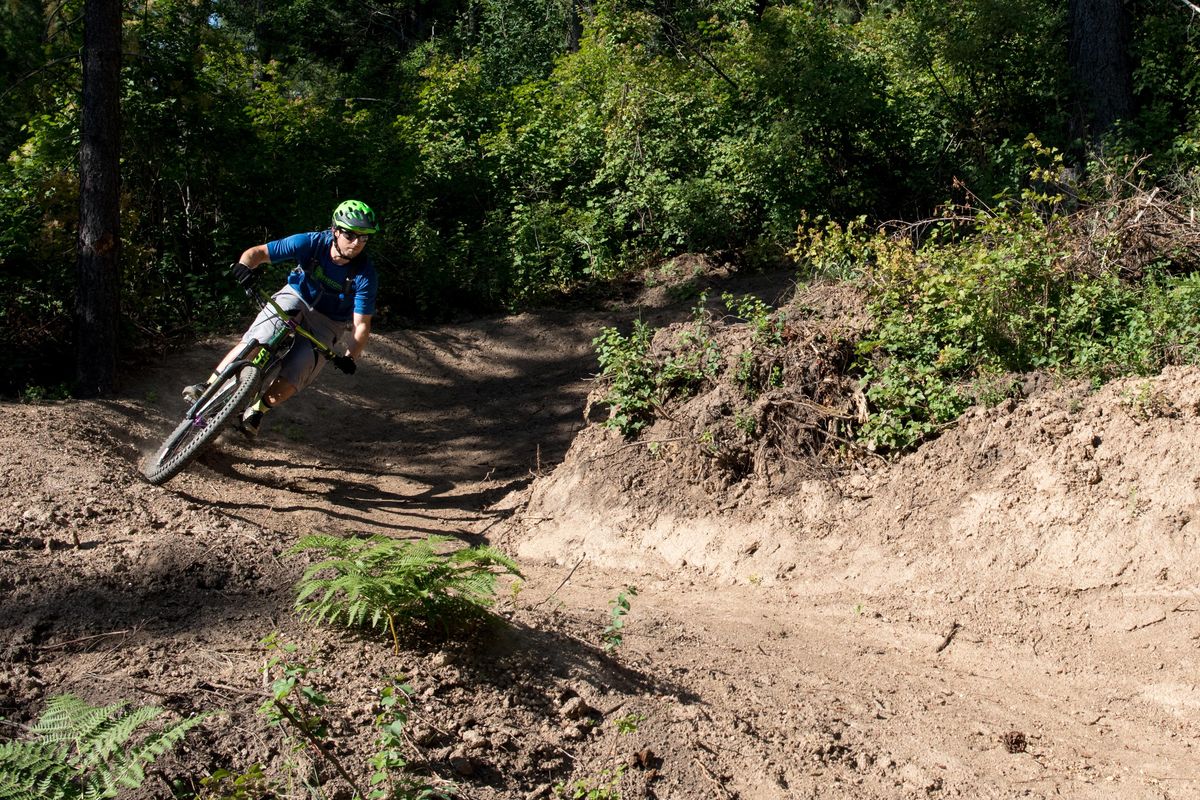State money pours into Spokane-area recreation, conservation projects in 2019

Nearly $9 million in state money will pour into regional recreation and conservation projects over the next two years.
That money will fund land acquisitions in the Dishman Hills, help remodel and refurbish county parks, continue work on the Ferry County Rail Trail and rehabilitate (and make ADA accessible) the Don Kardong Bridge by Gonzaga University.
Those disparate projects are all receiving money from the Washington Wildlife and Recreation Program.
“We like to call WWRP the best-kept secret in terms of the state grant programs,” said Betsy Robblee, the outreach and policy manager for the Washington Wildlife and Recreation Coalition, a nonprofit associated with the WWRP. “It’s this really unique, nationally recognized program.”
Jeff Lambert, the executive director of the Dishman Hills Conservancy and a veteran of many conservation grant applications, agreed with Robblee. In his estimation, the program is unique because of how grants are reviewed and awarded. Citizens with expertise in conservation, ecology and recreation review the applications and evaluate their individual merit.
“They look through the slick presentations or the bad presentations and they judge the actual project,” he said. “There are no politics. The best projects get funded.”
Lambert has good reason to praise the process. The Dishman Hills Conservancy received $803,700 in 2019. That money is being used to fund the purchase of a 120-acre parcel of the Rocks of Sharon area. The parcel, which has commanding views of the Palouse, was privately owned and had a potential for development despite widespread community use.
The conservancy is also using the money to purchase the Wilson Property, a 137-acre parcel.
“I’m really pleased we were able to compete with the largest agencies and conservation groups in the state and win a grant. That’s a big deal,” Lambert said.
About 270 projects were submitted for consideration in the 2019 cycle, Robblee said. Of those, roughly 100 were funded.
“A lot of these projects wouldn’t happen,” she said. “Because funding is so tight. We feel fortunate to be able to help these community dreams come to life.”
The WRRP program is also unique because it funds different kinds of projects. Many grants focus on particular types of projects, such as conservation. WWRP has 12 categories, including critical habitat, farmland preservation, local parks, riparian areas and trails.
“It’s a pretty unique resource for communities to be able to access funding for essentially everything outdoors,” she said.
The flexibility is partly what attracts the Inland Northwest Land Conservancy to the WWRP grants, INLC executive director Dave Schaub said. The INLC is spearheading the Olmstead 2.0 effort, which hopes to preserve natural and wild spaces in the Spokane area. Only 10 percent of Spokane County is public land, and a growing population is putting pressure on traditionally natural areas.
“WWRP funds are going to be absolutely crucial to that effort,” he said.
INLC plans to submit a proposal to WWRP in 2020. It was a partner in the Saltese Flats wetland protection project, which received $473,000 from the WWRP program this year.
Although the public may know little or nothing about the WWRP program, it is not new and has funded numerous regional projects over its 30-year history.
The nonprofit Washington Wildlife and Recreation Coalition was started in 1989. A year later, the Legislature created the WWRP. Every two years, the Washington Recreation and Conservation Office evaluates potential projects and ranks them. The nonprofit then submits a funding request to the Legislature. The Legislature allocates money to the program. Projects receive funding based on their ranking.
In 2019, the Legislature placed $85 million into the WWRP pot. Of that, $8,901,184 will go to Eastern Washington projects.
Notable projects in 2019 included the Palouse to Cascade trail, which was awarded $1.6 million to renovate a 975-foot historic trestle crossing over Highway 270 and Hangman Creek. The Department of Natural Resources received $1.2 million to purchases 437 acres at Steptoe Butte. Spokane County received $1.2 million, which already purchased 901 acres connecting the Mica Peak Conservation Area with the Liberty Lake Regional Park.
Over the past three decades, the WWRP program has funded 138 projects in Eastern Washington (3rd, 4th, 6th, 7th and 9th legislative districts), investing $93,129,758. That money has helped restore or protect about 75,000 acres and more than 70 miles of riparian areas.
Notable projects include the 2000 acquisition of Quartz Mountain on Mount Spokane, the 2005 construction of the Sandifur Bridge Centennial Trail, the 2018 construction of the adaptive baseball field at Mission Park and the 31-acres of Holy Names property purchase, among others.
“It’s been extremely impactful on this community, whether it’s through purchasing open space land like Mica Peak or Antoine Peak, or developing new community parkland like Bidwell Park,” Spokane County Parks manager Paul Knowles said.
CORRECTION: This article incorrectly described what agency evaluates and ranks potential projects. It has been corrected.